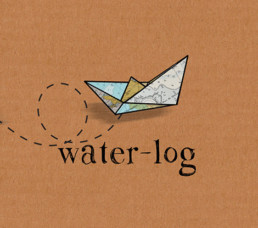This is a long overdue post all about St Lucia. Overdue largely because we needed a break after crossing our first ocean. We were straining our eyes, scanning the horizon for that first glimpse of land, all over-excited. But, we’re sailing, so, once we’d caught sight of land, it remained our goal, tantalizingly almost within reach for the next four hours. We moored up, were promptly offered a cold beer by our new neighbours, whirled our way through Caribbean customs procedures and promptly bundled into a nearby van and wound up at a nearby street party.
Gros Islet is a small suburb just outside Rodney Bay where they close off the streets on a Friday and open food and booze stalls. Turns out that a cluster of streets full of all types of people wandering about, men offering ‘local viagra’ which means super strong rum drinks, barbecued chicken and local hot-plate breads, impromptu pool games with the local big shot, late night ice cream and then tottering back to the boat is the perfect people-watching antidote to nearly three weeks at sea.
A few days r&r in the marina (by which we mean recharging the boat’s batteries and refilling the water tanks) we pottered down the west coast towards Marigot Bay, the ‘hidden’ anchorage. Not called hidden because it is deserted as we found it full of other boats looking smug at having settled in such a picturesque location. The hidden bit refers to how the bay suddenly opens up out of a deep gouge in the cliff. It was a beautiful spot, clear waters, palm trees and mangroves. Fruit vendors motor up to you on their little boats offering fresh local mangoes, bananas, papayas, love apples and grapefruit. So we gorged ourselves, indulging in the novelty of being able to food shop again.
From here we popped back up North to poke our noses into the capital: Castries. Although it has some souvenir commerce aimed purely with the cruise ship passengers in mind, we were able to skirt past this and get bantering with sellers in the proper fresh food market. St Lucians like tourists in general and always want to talk to you, even when there’s no question of trying to sell you something. Castries was the opposite of Rodney and Marigot in that it wasn’t picturesque; none of our photos would be mistaken for postcards here. But it was our first real example of a working, functioning East Caribbean town.
Next stops were Anse la Raye and Soufriere. We were the only yacht anchored off Anse la Raye, always a bonus. Here we discovered a simple, pretty little town that still bore the deep scars of being hit by hurricane Thomas in 2010. The houses were wooden, colourful glorified sheds and there were chickens, dogs and children playing in the street. The village holds a fish fest every Friday. We arrived on a Thursday which meant that we got to stroll around and chat to locals in a much more relaxed way as the place put on its ‘best behaviour’ for the proper tourist influx of the Friday.
In Soufriere we anchored just off the beach and tied our stern line to a palm tree. Here we all got into some proper snorkelling in the luminous turquoise water at the foot of the Pitons, two great big, rainforest clad mountains that dominate the landscape and the local beer is named after. You walk through some bits of the forest to get from our beach to the town. Here, again everyone wants to talk to us, often reassuring us that we “shouldn’t be afraid.” We’re not afraid and happily chat to anyone but wonder at some of the reactions the locals must have had to their overtures of friendship in order to spout this phrase on so many occasions.
James and I like getting lost in these little towns and villages. Wandering the backstreets, chatting to a man at a lathe repairing his little fishing boat, hearing the nonsense tales of the con-man kid in training – who informs us that pigeons lay eggs which then make small pigeons and can we give him a little something for this tidbit of knowledge – sipping our Pitons in the middle of the afternoon and finally unwinding after a year of purposeful endeavour.
